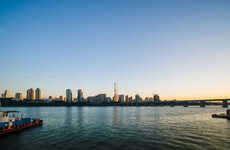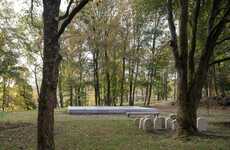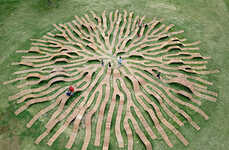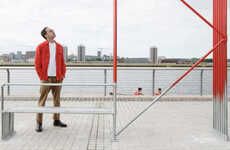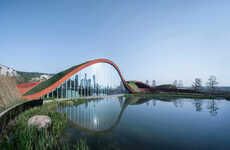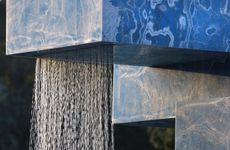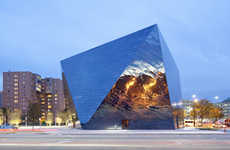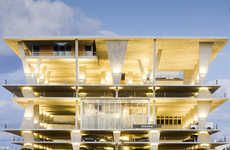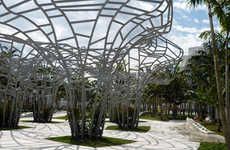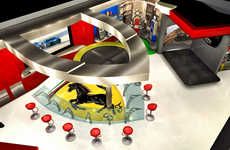
The ChonGae Sunken Stone Garden Brings a Bit of Nature Back to Seoul
Meghan Young — November 1, 2011 — Eco
References: mikyoungkim & mymodernmet
Although the ChonGae Sunken Stone Garden may not look particularly groundbreaking in regards to its concept of design, this new public space shows just how much the world is trying to re-embrace its natural surroundings after paving over them with stone and concrete. Before this space was established, the Cheonggyecheon stream was covered by a road for 40 long years. Now it has been revealed again for citizens to enjoy and relax by.
Designed by Mikyoung Kim, the ChonGae Sunken Stone Garden boasts different levels to act as public seating as well as raised stages that are set to host a multitude of festivities including concerts, fashion shows and festivals.
Not only does the ChonGae Sunken Stone Garden celebrate nature, it has helped improve water quality as well as counter the urban heat island effect in the central business district of Seoul.
Designed by Mikyoung Kim, the ChonGae Sunken Stone Garden boasts different levels to act as public seating as well as raised stages that are set to host a multitude of festivities including concerts, fashion shows and festivals.
Not only does the ChonGae Sunken Stone Garden celebrate nature, it has helped improve water quality as well as counter the urban heat island effect in the central business district of Seoul.
Trend Themes
1. Nature-centered Urban Design - Embrace the natural surroundings of urban areas through spaces and infrastructure centered around nature, promoting health and environmental benefits.
2. Multi-functional Public Spaces - Designing spaces to accommodate a variety of events provides more accessibility and utility, allowing for more experiences and generating a greater sense of community engagement.
3. Revitalizing Historic Features - Restoration and preservation of existing natural or cultural features, restoring their original purpose and improving their accessibility and function for modern societies.
Industry Implications
1. Landscape Architecture - Incorporating sustainable and innovative designs that allow city dwellers to coexist with nature in urban areas.
2. Event Planning - Planning and coordinating events and festivals in traditionally under-utilized spaces, focusing on the natural environment and creating memorable experiences.
3. Urban Planning - Emphasizing the importance of preserving and revitalizing historic landmarks and areas, while designing infrastructure to accommodate and prioritize public access to nature.
3.3
Score
Popularity
Activity
Freshness


